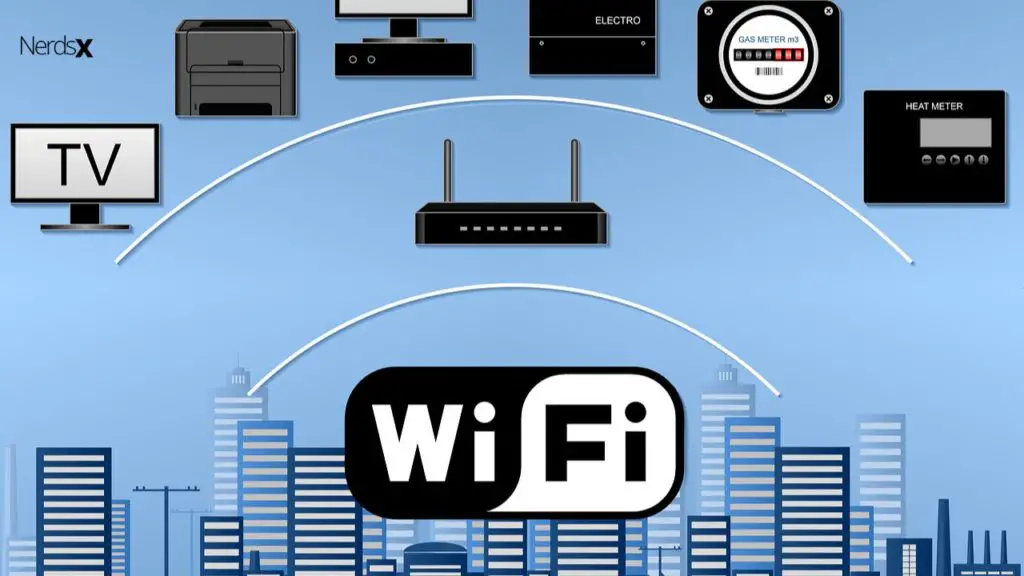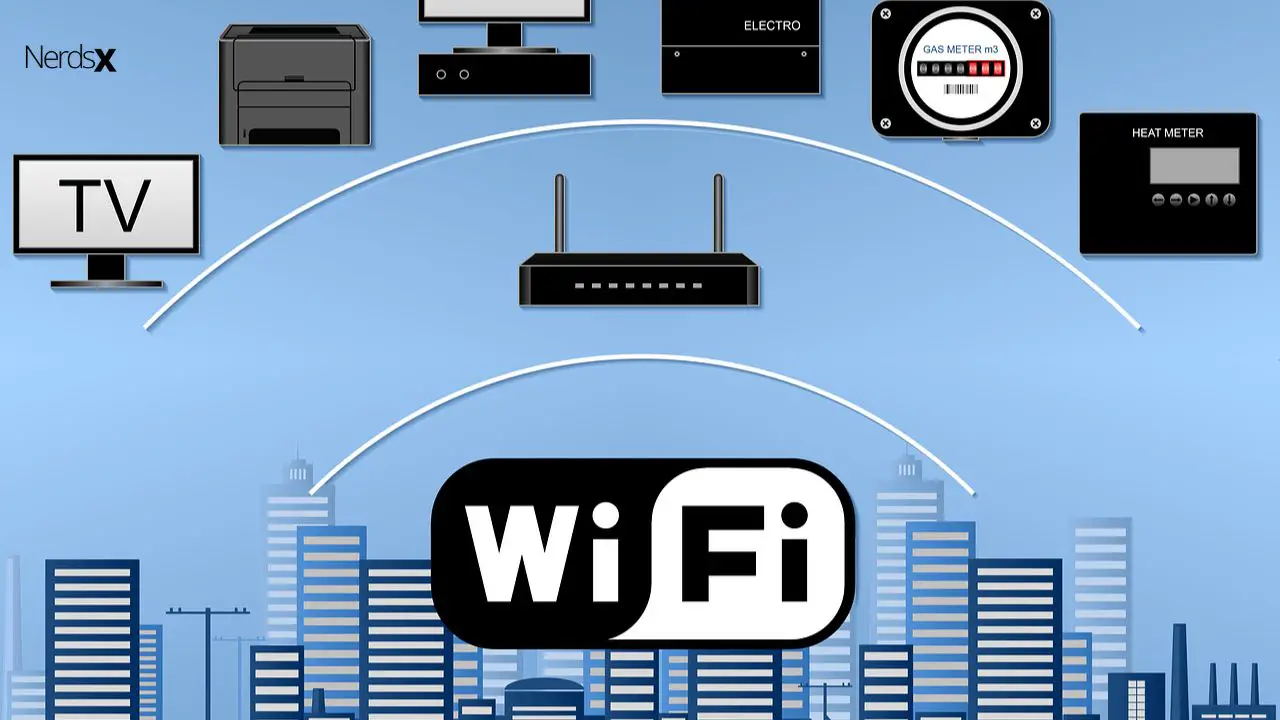Today, Windows 10 is the dominant Microsoft operating system for Windows users, as support for prior Windows versions dwindles. It has attractive features and frustrating downsides, much like any other OS. There is nothing like a flawless operating system.
“Not turning on Wi-Fi” is a problem often associated with the Windows 10 operating system. While this isn’t always a Windows 10 bug, it does appear to occur regularly.
Don’t worry if you’re not familiar with Windows 10 or can’t seem to figure out how to fix it. A variety of factors can cause this problem.
Wi-Fi has been such an essential technology for so long that we often take it for granted, like the electricity that runs our computers. However, Wi-Fi issues on your computer might bring your entire day to a standstill.
Not getting your laptop or computer online is one of the most aggravating situations you might have with your Wi-Fi connection. You have a suitable device and a stable Wi-Fi connection—it should be a technological match made in heaven.
A good network connection is essential because a lot of work is dependent on stable internet connectivity. There could be different causes why your internet connection isn’t working correctly.
When you try to turn on Wi-Fi in Windows 10, it won’t turn on for some reason, you’ll need to utilize a wired network to troubleshoot the “Windows 10 Wi-Fi won’t turn on” issue.
How To Solve Wi-Fi Can’t Turn On In Windows 10
These are ways which one can use to solve the Wi-Fi not turning on problem. It should be noted that it will not require one to run all the methods but one that is most suitable.
1. If you’re using a computer, make sure the Wi-Fi is turned on.
2. Make a change to your wireless network adapter’s properties.
3. Drivers for your network adapter need to be updated.
4. Ensure you uninstall and install your network adapter driver.
5. Run the Troubleshooter for network adapters.
6. Do system restoration.
Method 1: If You’re Using A Laptop, Ensure The Wi-Fi Switch Is Turned On
Wi-Fi connection is commonly controlled by a switch or button on a laptop. Whether you’re having trouble using Wi-Fi on your computer, try toggling the Wi-Fi switch numerous times to see if it’s a problem. You do this by;
1. Press the Windows button and type “Settings,” then select the app from the search results.
2. Select “Network & Internet” from the drop-down menu.
3. Go to the menu bar on the left side of the Settings screen select Wi-Fi.
4. To enable your Wi-Fi adaptor, toggle the Wi-Fi option to “On.”
Method 2: Modify Your Wireless Network Adapter’s Properties
Corrupt network settings may cause the “Windows 10 Wi-Fi won’t turn on” issue. Some people were able to resolve their “Wi-Fi won’t turn on” problem by altering the properties of their Wi-Fi network adapter. These are the actions to take:
1. To access the Run box, hit the Windows logo key and R at the same time on your keyboard.
2. To open Device Manager, type devmgmt.MSC and press Enter.
3. Expand the entry for Network Adapters.
4. Select Properties from the right-click menu for your Wi-Fi network adapter.
5. Select the Advanced option.
6. Select 802.11n Channel Width for band 2.4 under Property and adjust the value from auto to 20 MHz Only.
Click the OK button. After that, your Wi-Fi should be operational. If the problem persists, try Method 3 below.
Method 3: Ensure Your Network Adapter Driver Is Up To Date
Wi-Fi may also be disabled due to a faulty or outdated network device driver. To correctly solve your “Windows 10 Wi-Fi won’t turn on” problem, you can upgrade your network adapter driver.
You may upgrade your network adapter driver in two ways: manually or automatically.
Manually update your network adapter driver: You may manually update your network adapter driver by visiting the hardware manufacturer’s website and looking for the most recent driver for your network adapter. If you opt for this way, be sure the driver you pick is compatible with the precise model number of your gadget and your Windowsversion.
Automatically update your network adapter driver: If you don’t have the leisure, tolerance, or computer skills to upgrade your network adapter driver, Driver Easy can do it for you.�?
There is no need to know what operating system your computer uses. You don’t have to worry about downloading and installing the inappropriate driver, and you don’t have to worry about making an error while downloading. It’s all taken care of by Driver Easy. Here is how to go about it:
1. Start with downloading and installing Driver Easy App.
2. Run Driver Easy and select Scan Now from the menu. After that, Driver Easy will check your computer for any problematic drivers.
3. To automatically download the correct version of any highlighted devices’ drivers, select Update next to them. You can then manually run them. Alternatively, you may select Update All to install them all at once. (You’ll be offered to upgrade to the Pro version when you press Update All. You get complete help as well as a 30-day money-back policy).
4. Check whether you can switch on Wi-Fi once you’ve upgraded your internet device driver.
Method 4: Reinstall Your Network Adapter Driver after Uninstalling It
You may also delete your network adapter driver to check if it solves your Wi-Fi issue.
1. Go to the Device Manager window.
2. Expand the Network ports section, right-click on your Wi-Fi network adapter, and choose Uninstall device from the menu.
3. Select Uninstall from the drop-down menu.
4. Windows 10 will automatically reload a network adapter driver when you restart your computer.
5. Check to ensure whether your Wi-Fi is restored. If it doesn’t work, try Method 5 below.
Method 5: Run The USB Connection Troubleshooter
You may also use the network adapter troubleshooter to see if you can solve your “Windows 10 Wi-Fi won’t turn on” issue. Follow these instructions to run the network adapter troubleshooter.
1. In the search box, type “troubleshoot” and hit Enter.
2. To run the Troubleshooter, go to Internet Connections and launch it.
3. Then, under Network Adapter, select “Run the Troubleshooter.”
4. Check to confirm if your Wi-Fi issue is resolved.
If all the above methods have failed, try method six as explained below.
Method 6: Restore The System
If the procedures above don’t work and your “Windows 10 Wi-Fi won’t turn on” consider doing a system restore on your machine.
System restore restores your system files and settings to a period in time when your computer’s Wi-Fi was working correctly, without damaging your data.
Here’s how to restore your system:
1. In the Windows search box, type recovery and hit Enter.
2. Select Open System Restore from the Recovery menu.
3. Click “Next” after selecting a new restore point.
4. Check the box next to it. More restoration points should be shown. A list of restore points should appear. These are essentially copies of your computer at that specific date and time. Choose a restore point from that date or somewhat before if you remember when you could connect to Wi-Fi (but no later).
5. Press “next,” and then “finish” to end the process.
Check to verify if your Windows 10 PC can now connect to the internet through Wi-Fi.

Three Methods For Turning On Wi-Fi On Your Windows 10 Device
On Windows 10, you may switch on Wi-Fi using one of three methods: a keyboard command, the Wi-Fi menu, or the Settings app.
The days of having to connect a cord to your computer and a phone line to access the internet are long gone.
Not only is it possible to browse the web at super-fast rates without using any cables these days, but it’s also the most popular way to do it.
Wi-Fi capabilities are now available on almost every computer on the market, and turning on Wi-Fi is the fastest and easiest route to connect to the internet on your Windows PC..
How Do I Turn On Wi-Fi On Windows 10?
First, look for a Wi-Fi button on your keyboard, which will display a picture of waves emanating from a circle or line. This is typical on laptops, and you’ll probably need to hit the “Fn” key and an “F” key to accomplish it.
Using The Wi-Fi Icon�?
1. Look in the lower-left corner of your monitor. A Wi-Fi icon, which resembles a radio wave transmitting upwards, may appear on the toolbar. If it’s not on your toolbar, click the upwards facing arrow to see if it’s grouped with other icons that aren’t on your toolbar.
2. To turn Wi-Fi on, click the Wi-Fi icon on your toolbar, then click the larger Wi-Fi box that appears in the pop-up menu.
Use The Start Menu To Turn On Wi-Fi.
1. Click the Windows icon, search “Settings,” and select the program from the results list.
2. Select “Network & Internet” from the drop-down menu.
3. Go to the menu bar on the left side of the Settings screen select Wi-Fi.
4. To enable your Wi-Fi adaptor, click the Wi-Fi option to “On.”
The Takeaway
Wi-Fi connectivity is essential in running our daily chores. Sometimes it is demoralizing when you try connecting to Wi-Fi via your Windows 10 device in vain. Such an issue doesn’t necessarily require an IT expert to resolve. You can troubleshoot the problem yourself by following the guide given on this page religiously.

